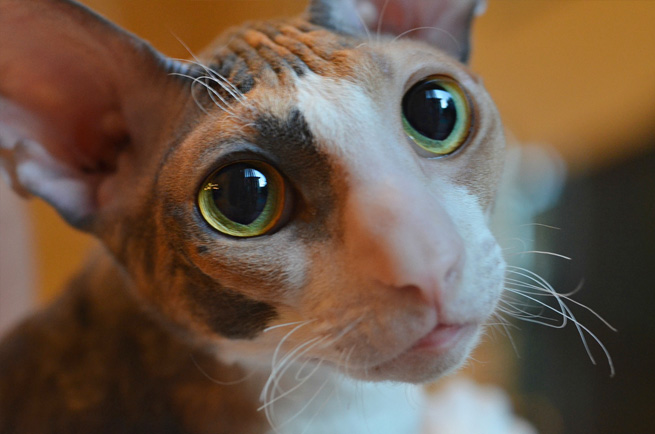Cornish Rex
The Cornish Rex has a slender, whippet-like frame with curly hair. They don’t have a guard coat and are therefore suitable as indoor cats, with their minimal shedding suiting allergy sufferers. They have alert eyes and large, wide ears. Their thin tail has very short hairs. This breed is loved for its distinct appearance.
Country of Origin
England
Colour
Black, brown, blue, chocolate, smoke, red, lilac and cream. Bi-colour and patterned coats have also been seen.
Cost
Size
Medium
Health
Although generally a healthy cat, the Cornish Rex is susceptible to hair loss, umbilical hernias at birth and heart disease.
Life Span
11-15 years
Intelligence
Eager to learn and highly playful, the Cornish Rex is a smart cat.
Suitability (Children)
Low
Feeding
The Cornish Rex loves to eat and will struggle to control themselves! They can be fed a normal cat diet but may require extra nutrition if they are particularly active.
Feeding Cost
Hair Shed
Little
Ailments
Although generally a healthy cat, the Cornish Rex is susceptible to hair loss, umbilical hernias at birth and heart disease.
Grooming Requirements
This breed sheds minimally and may be suitable for allergy sufferers depending on their severity. Their nails and ears should be maintained regularly.
The Cornish Rex was an accidental breed, discovered in Cornwell, England around 1950. A result of a mutation in a litter of barn cats, the Cornish Rex became an experiment with breeders realising that the curly, lamb-like appearance of the kitten was a recessive gene. They were later crossbred with Siamese, Burmese and British Shorthair cats. The breed standard is now recognised by the Cat Fanciers’ Assocation.
comments powered by Disqus



